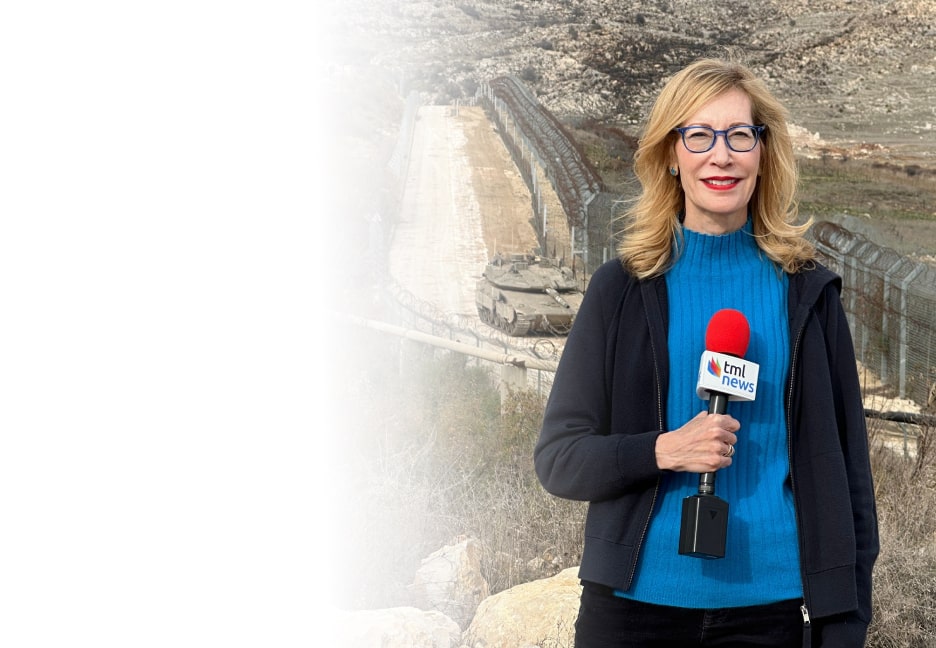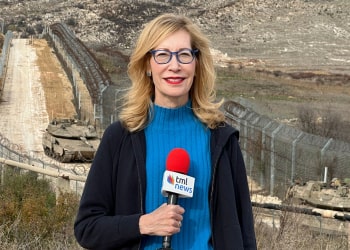US Officials: Floating Pier To Increase Humanitarian Assistance to Gaza by 150 Trucks a Day
As part of a broader $95 billion war aid initiative, the US is constructing a temporary pier to streamline the process of delivering essential supplies to Gaza
US President Joe Biden last week signed a $95 billion foreign war aid bill that provides $17 billion in both offensive and defensive military support to Israel and earmarks $9.2 billion for humanitarian assistance to war-torn regions, including $1 billion for Gaza.
“Nearly 30% of children in northern Gaza are showing signs of severe malnutrition. And in southern Gaza, nearly a quarter of the population is facing this kind of catastrophic food insecurity,” a senior Biden Administration official said in an April 25 briefing provided to The Media Line by a US Department of Defense (DoD) spokesperson.
In response, the Biden Administration aims to expedite aid to Gaza with a soon-to-be-completed floating pier. The pier is the final destination of a new maritime route, which begins in Cyprus.
The US has teams of troops working in Cyprus and Israel, with additional forces positioned offshore.
This is a unique mission. Last month, consistent with the president’s direction, the secretary of defense directed the US Central Command to lead establishment of a temporary pier to deliver humanitarian assistance from the sea into Gaza
“This is a unique mission. Last month, consistent with the president’s direction, the secretary of defense directed the US Central Command to lead establishment of a temporary pier to deliver humanitarian assistance from the sea into Gaza,” a senior military official said in the transcripts The Pentagon provided to The Media Line.
The modular Trident pier resembles a large Lego set that is built at sea. Once assembled, the pier, tethered to the beach, allows ships to offload offshore. The US is building and operating the pier, while other countries and entities transport the shipments inland.
“The establishment of a temporary pier into Gaza and execution of this mission will be done by a predominantly joint force from the US Army and US Navy using a system called JLOTS, Joint Logistics Over-The-Shore. One thousand US soldiers and sailors will support this effort to enable delivery of humanitarian assistance from the Sea to Gaza for further distribution ashore and as coordinated by USAID [the United States Agency for International Development],” the senior military official continued.
This holiday season, give to:
Truth and understanding
The Media Line's intrepid correspondents are in Israel, Gaza, Lebanon, Syria and Pakistan providing first-person reporting.
They all said they cover it.
We see it.
We report with just one agenda: the truth.


The United States Central Command (CENTCOM) reports it has delivered “nearly 1,110 tons of humanitarian assistance” to date. The last airdrop by CENTCOM, on April 28, consisted of nearly 40,000 Meals, Ready-to-Eat (MREs) and drinking water. CENTCOM partners with the Jordanian Royal Air Force on airdrops.
The 1,200-calorie meals are designed for optimal field nutrition and compactness. CENTCOM troops receive meals similar to those provided to the Americans constructing the pier.
Most Gazans in the north are extremely grateful to receive anything that can keep them alive & going
And while a video of an alleged Palestinian activist saying the meals tasted so bad that they were “torturing us more than its being aid” made its rounds on social media and was amplified by the Quds News Network, Palestinian American Ahmed Fouad Alkhatib told his over 41,000 followers on the short message platform X not to listen to the “pathetic activist” because “most Gazans in the north are extremely grateful to receive anything that can keep them alive & going.”
Once operational at full capacity, the pier will increase humanitarian deliveries to Gaza by an additional 150 trucks per day. In the past two weeks, an average of 220 trucks have delivered humanitarian aid to Gazans daily.
The California-based Naval Beach Group 1 and the Virginia-based US Army’s 7th Transportation Brigade are tasked with transporting and constructing the pier.
The DoD, in collaboration with USAID, is using the UK-provided RFA Cardigan Bay ship for US troops to reside offshore.
The senior military official emphasized there would not be “US military boots on the ground” in Gaza and that US troops from engineering units have been training with IDF engineers on an undisclosed Israeli beach. IDF engineers handle all tasks on the Gazan beachhead, with additional IDF units securing both Israeli and American engineers.
“Force protection is our number one priority,” the senior military official said.
The senior military official would not go into detail about US defensive plans for the pier operation, for security reasons, but said the presence of US Navy destroyers in the Eastern Mediterranean certainly factored into those plans.
The pier is expected to be completed within weeks. US troops will remain hundreds of yards away from the beach. To avoid American presence in Gaza, non-US truck drivers will transport aid from the pier to distribution areas.
CENTCOM’s public affairs office referred The Media Line to the Defense Department-provided transcripts.

